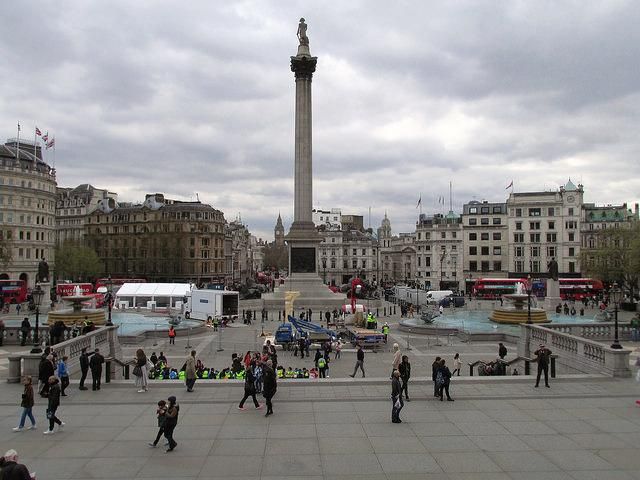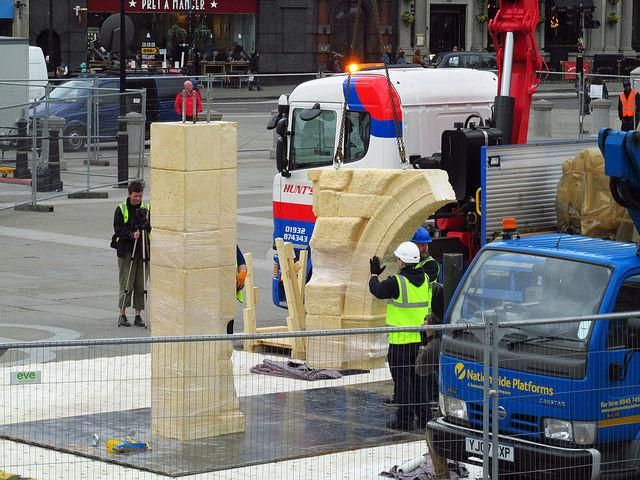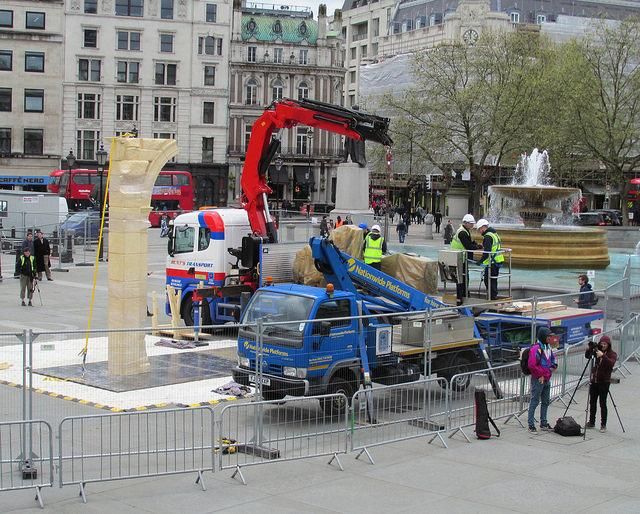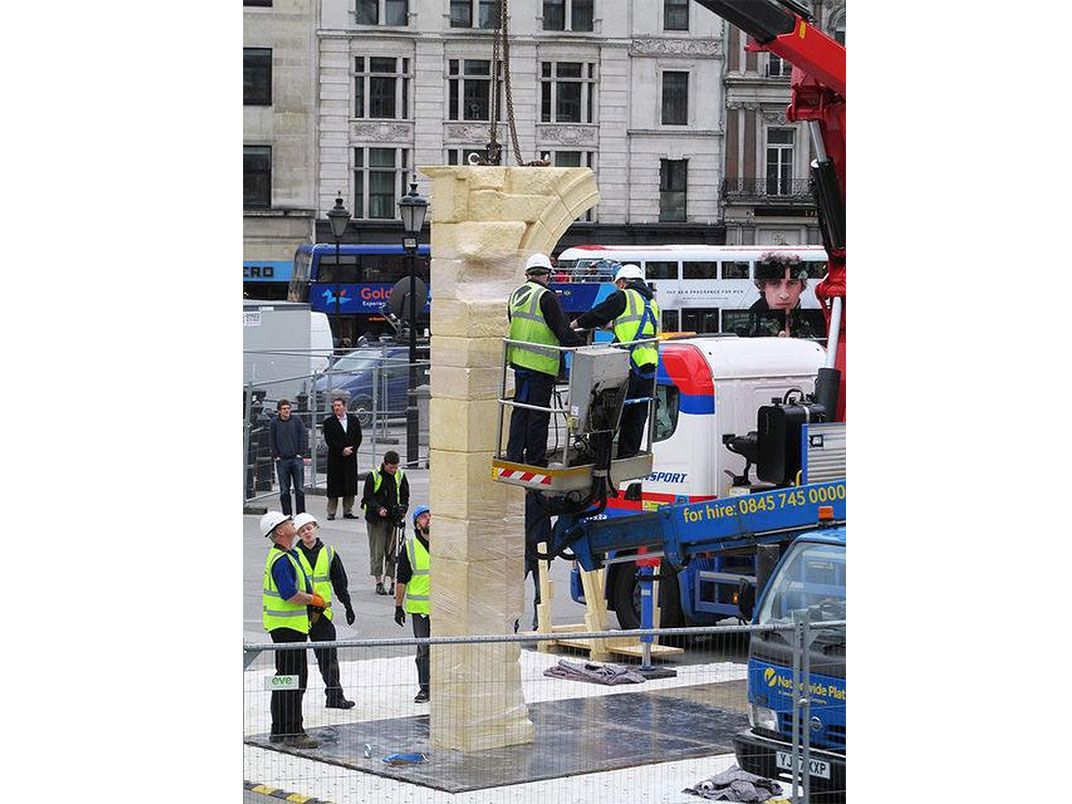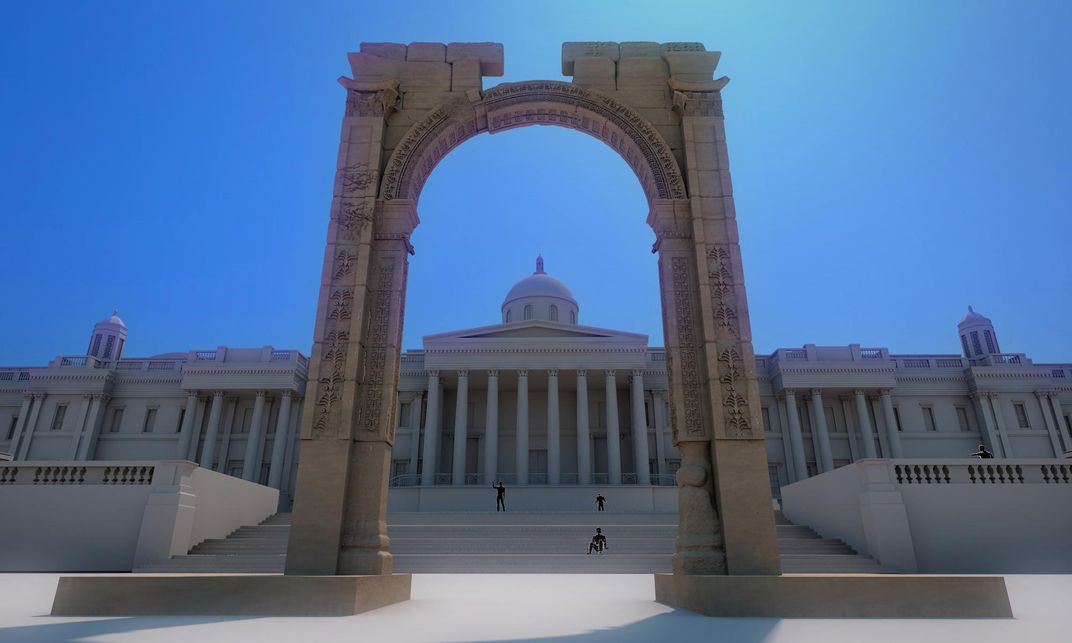Palmyra Arch Destroyed by ISIS Rises Again in Central London
Using 3-D photos and computer guided stonecutters, researchers recreated the Triumphal Arch destroyed by the terrorist group last year
When the militant group ISIS overran the ruins of Palmyra in May 2015, archaeologists shuddered. The ancient Syrian city, which is an Unesco world heritage site, is one of the most significant ruins in the Middle East. Their fears weren’t unfounded—when the city was recaptured from the terrorist group in March, researchers found they had destroyed some of the site’s most iconic landmarks, including the Temple of Bel and the Triumphal Arch.
But now, in London’s Trafalgar Square, the Triumphal Arch has risen again. According to Lauren Turner at the BBC, Britain's Institute for Digital Archaeology, a joint venture between Harvard, Oxford and Dubai's Museum of the Future, used 3-D images to re-create a three-quarter scale model of the arch from 12-tons of Egyptian marble. A large ceremony presided over by London Mayor Boris Johnson unveiled the arch yesterday.
“It is a message of raising awareness in the world,” Maamoun Abdulkarim, Syria's director of antiquities tells Turner. “We have [a] common heritage. Our heritage is universal—it is not just for Syrian people.”
The arch is scheduled to remain in Trafalgar Square for three days before traveling to New York and Dubai. Next year, it will be placed in Palmyra near the location of the original arch, which was built by the Romans.
The new arch was created using computer-guided stonecutters that were able to chisel out an exact replica of the monument that once loomed over Palmyra. The model is “completely indistinguishable from the original,” founder of the Institute for Digital Archaeology Roger Michel tells Turner.
But the project would not have been possible without the efforts of the IDA's Million Images Database, a project that gives 3-D cameras to volunteers around the world who photograph important monuments and archaeological sites. It also digitizes paper images of monuments, with the aim to build a database that will help preserving them for the future. IDA was able to use images taken in Palmyra before it was invaded to help recreate the Triumphal Arch.
IDA is not alone in its efforts to digitally archive monuments and art treasures. Deborah Amos at NPR points out that there are several other projects doing similar things, like the New Palmyra group based at MIT which has created a 3-D model of the city. Other projects include Project Mosul, which is recreating the artifacts and sites destroyed there during the Iraq War and Jordan's Za'atari refugee camp's effort to create miniatures of the historic site. “This is the irony of destruction,” John Jay College art crime specialist Erin Thompson, who has worked on preventing looting and destruction of cultural heritage tells Amos. “Nobody cared, but as soon as you link it to terrorism, then I’m on CNN.”
While the Triumphal Arch in London is a great proof of concept for replicating 3-D monuments, its producers say it has a larger purpose. Michel tells Turner that he wanted the replica to appear in London first because much of that city had to be reconstructed after World War II. He wants it to serve as an act of defiance against ISIS and other regimes that try to suppress history or knowledge. “This is not any different from book-burning. This is an attempt by folks to exorcise portions of history,” says Michel. “This is about censorship, in my opinion. If there are folks in the world who want to delete things from the historical record, they need to be restored. It’s as simple as that.”
